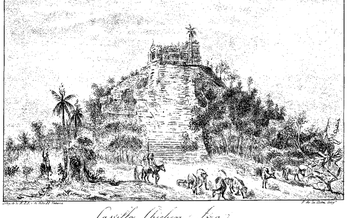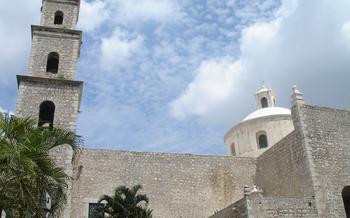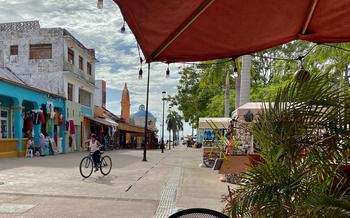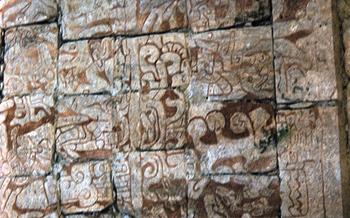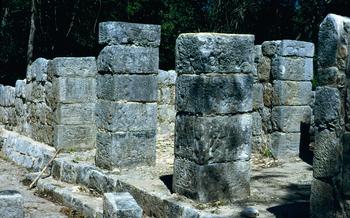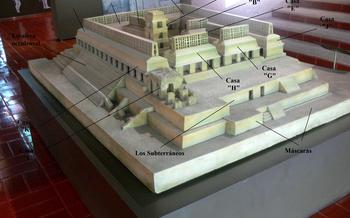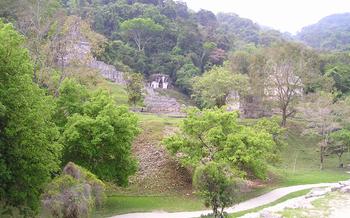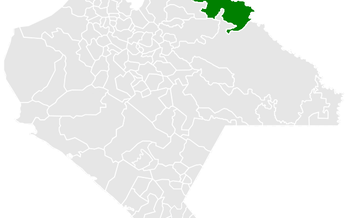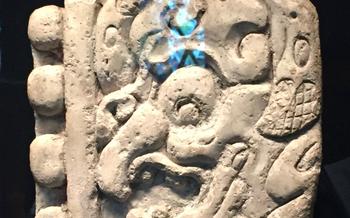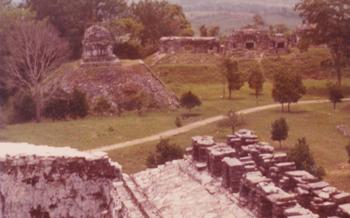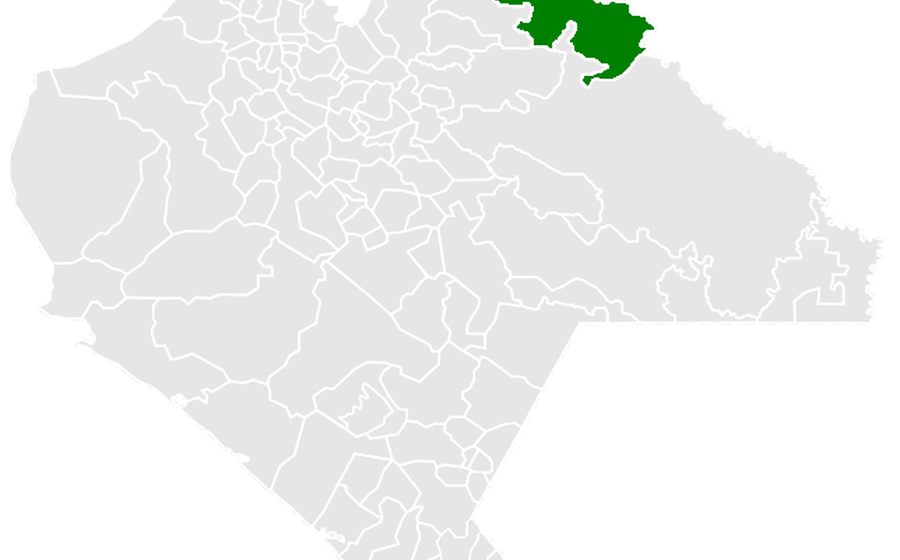
Museo Del Textil
- Palenque's Cultural Cornerstone: Museo Del Textil
- Historical Significance: The Legacy of Mayan Textiles
- Preserving a Living Tradition: The Museum's Role
- A Journey Through Time: The Museum's Collection
- Unveiling the Symbolism: Mayan Textiles as Storytelling
- Traditional Techniques: A Masterpiece in Every Thread
- Interactive Experiences: Workshops and Demonstrations
- Supporting Local Artisans: Promoting Sustainable Tourism
- Educational Programs: Nurturing Cultural Appreciation
- Special Exhibitions: A Showcase of Textile Excellence
- Research and Documentation: Preserving Textile Knowledge
- Cultural Events and Festivals: Celebrating Mayan Textiles
- Community Engagement: Empowering Local Artisans
- Insider Tip: Explore Beyond the Museum Walls
Palenque's Cultural Cornerstone: Museo Del Textil
Nestled in the heart of Palenque, the Museo Del Textil stands as a testament to the rich textile traditions of the Mayan civilization. Established in 1999, the museum is dedicated to preserving and promoting the cultural heritage of the region through its impressive collection of traditional Mayan textiles.
The Museo Del Textil serves as a vital institution in safeguarding the legacy of Mayan textile art, a craft that has been passed down through generations and holds immense cultural significance. The museum's collection encompasses a diverse range of textiles from various Mayan regions, showcasing the evolution of designs, techniques, and symbolism that have shaped the identity of the Mayan people.
Through educational programs, workshops, and exhibitions, the Museo Del Textil actively engages visitors in the vibrant world of Mayan textiles. Visitors can delve into the intricacies of Mayan weaving techniques, discover the symbolism behind intricate patterns, and gain insights into the role of textiles in Mayan rituals and daily life. The museum's dedication to preserving this cultural heritage ensures that the legacy of Mayan textiles continues to inspire and captivate generations to come.
Historical Significance: The Legacy of Mayan Textiles
The ancient Mayan civilization, renowned for its advanced knowledge in astronomy, mathematics, and architecture, also possessed a rich and vibrant textile tradition. Textiles played a crucial role in Mayan culture, serving as a means of cultural expression, identity, and social status. The intricate weaving techniques and symbolism employed by the Mayans showcased their exceptional artistry and craftsmanship. These textiles were not merely utilitarian objects but held deep cultural and spiritual significance, reflecting the Mayans' beliefs, traditions, and worldview.
The Mayans possessed an extensive repertoire of weaving techniques, including backstrap looms, tapestry weaving, and embroidery. They utilized natural fibers such as cotton, agave, and bark to create textiles of remarkable durability and beauty. The vibrant colors achieved through the use of natural dyes derived from plants, minerals, and insects added to the allure of Mayan textiles. These textiles adorned the bodies of Mayans from all walks of life, from commoners to rulers, and served various purposes, including clothing, blankets, and ceremonial garments.
Textiles also played a significant role in Mayan rituals and daily life. Elaborate textiles were used to decorate temples, altars, and other sacred spaces, creating an awe-inspiring atmosphere during religious ceremonies. The intricate designs and motifs woven into these textiles often depicted mythological scenes, historical events, and symbolic representations of the Mayan cosmos. In everyday life, textiles served as a form of currency, were used for trade and barter, and were often given as gifts during special occasions such as weddings and births.
Preserving a Living Tradition: The Museum's Role
The Museo del Textil is dedicated to preserving and promoting the rich textile traditions of the Mayan people. The museum works to document and archive traditional weaving techniques, ensuring that these skills are passed down to future generations. Through exhibitions and sales, the museum supports local artisans and cooperatives, providing them with a platform to showcase and sell their beautiful creations. Educational programs raise awareness about the importance of traditional textiles, fostering a deeper appreciation for this vital aspect of Mayan culture. By preserving and promoting Mayan textile traditions, the Museo del Textil plays a crucial role in ensuring that this living heritage continues to thrive.
A Journey Through Time: The Museum's Collection
The Museo del Textil houses a breathtaking collection of traditional Mayan textiles, spanning various regions and time periods. Visitors can embark on a journey through history, tracing the evolution of Mayan textile designs and techniques. The collection showcases intricately woven garments, ceremonial textiles, and everyday household items, each telling a unique story about the cultural heritage of the Maya. Through interactive displays and guided tours, visitors gain insights into the significance of these textiles in Mayan society, from their role in rituals and daily life to their use as a means of cultural expression.
Unveiling the Symbolism: Mayan Textiles as Storytelling
Mayan textiles were not merely decorative; they were powerful tools for communication and storytelling. Through the intricate patterns, colors, and motifs, Mayan artisans conveyed messages, stories, and beliefs. Each textile was a visual narrative, a unique expression of the weaver's creativity and cultural heritage.
The use of colors was particularly significant. Bright, vibrant colors like red, yellow, and blue symbolized life, energy, and fertility. Darker colors like black and brown represented night, death, and the underworld. The combination of colors created a visual symphony, conveying complex emotions and messages.
Patterns also played a crucial role in the storytelling process. Geometric designs, for instance, represented the cosmos and the four directions. Zigzag patterns symbolized lightning and rain, essential elements for agriculture. Animal and human figures depicted mythical creatures, deities, and ancestors, connecting the wearer to the spiritual realm.
Motifs were another essential element of Mayan textile symbolism. Floral motifs represented fertility and growth, while animal motifs symbolized power and strength. The repetition of motifs created a rhythm and flow, adding depth and dimension to the textile's narrative.
Through these visual elements, Mayan textiles became a means of recording historical events, cultural beliefs, and mythological tales. They were a window into the rich and complex world of Mayan society, offering insights into their values, traditions, and spiritual beliefs.
Traditional Techniques: A Masterpiece in Every Thread
The intricate weaving techniques employed by Mayan artisans are a testament to their skill and artistry. Backstrap looms, a traditional tool used by Mayan weavers, allow for precise control over the weft and warp threads, creating intricate patterns and designs. Natural dyes, extracted from plants, insects, and minerals, produce a vibrant array of colors that remain steadfast against fading. The collaborative nature of textile creation within Mayan communities fosters a sense of unity and cultural preservation. Each textile is a masterpiece, woven with love, patience, and a deep connection to tradition.
Interactive Experiences: Workshops and Demonstrations
The Museo Del Textil offers a unique opportunity for visitors to engage with Mayan textile traditions through interactive workshops and demonstrations. Led by skilled weavers and artisans, these workshops provide hands-on experience in various textile techniques, including dyeing, weaving, and embroidery. Participants can learn about the intricacies of Mayan weaving, the significance of colors and patterns, and the stories behind the textiles.
These workshops are designed to foster cultural exchange and preserve traditional knowledge. Visitors can interact directly with the artisans, ask questions, and gain insights into the cultural and historical significance of Mayan textiles. The workshops are suitable for people of all ages and skill levels, making them an ideal way to connect with the local culture and support the preservation of Mayan textile traditions.
Supporting Local Artisans: Promoting Sustainable Tourism
The Museo Del Textil actively supports local artisans and cooperatives, enabling them to showcase and sell their beautiful creations to visitors. Fair trade practices and initiatives are implemented to ensure that Mayan weavers are fairly compensated for their work, empowering them economically and preserving their traditional craft. The museum's commitment to sustainable tourism extends beyond its walls, encouraging visitors to engage with local artisans and purchase authentic Mayan textiles directly from them. This direct support helps sustain the livelihoods of these skilled craftspeople, ensuring the continuation of their ancestral traditions while also contributing to the economic development of local communities.
Educational Programs: Nurturing Cultural Appreciation
The Museo Del Textil's educational programs play a crucial role in nurturing cultural appreciation and fostering a deeper understanding of Mayan textile traditions. The museum offers a range of workshops, lectures, and demonstrations designed to engage students, visitors, and the local community.
These programs aim to educate participants about the history, significance, and techniques of Mayan textiles. Through interactive workshops, participants have the opportunity to learn from master weavers and artisans, gaining hands-on experience in weaving, dyeing, and other textile crafts. These workshops provide a unique opportunity for cultural exchange and the preservation of traditional knowledge.
The museum also collaborates with schools and universities to promote cultural understanding and appreciation of Mayan textiles among young people. These collaborations include educational visits, workshops, and lectures, which introduce students to the richness and diversity of Mayan textile traditions.
Additionally, the museum organizes lectures and seminars by experts in the field of Mayan textiles. These events provide a platform for scholars, researchers, and artisans to share their knowledge and insights, fostering a deeper appreciation for the cultural significance and artistry of Mayan textiles.
Special Exhibitions: A Showcase of Textile Excellence
The Museo Del Textil hosts temporary exhibitions that showcase rare and unique textiles from its collection, providing visitors with an opportunity to explore specific aspects of Mayan textile art. These exhibitions may focus on a particular region, time period, or technique, offering a deeper dive into the diverse world of Mayan textiles. The museum collaborates with other museums and institutions to share knowledge and expertise, bringing together a variety of perspectives on this rich cultural tradition. Special exhibitions play a crucial role in raising awareness about the significance of Mayan textiles and attracting visitors from around the world.
Research and Documentation: Preserving Textile Knowledge
The Museo Del Textil is committed to preserving and understanding Mayan textile traditions through comprehensive research and documentation efforts. In collaboration with scholars and researchers, the museum conducts in-depth studies on various aspects of Mayan textiles, including their history, techniques, symbolism, and cultural significance. These studies contribute to a broader understanding of Mayan textile art and its role in Mayan society.
The museum also engages in extensive archiving and cataloging of textile artifacts and oral histories. This documentation process ensures that traditional knowledge and practices are preserved for future generations. The museum's comprehensive collection of textiles, combined with its research and documentation efforts, serves as a valuable resource for scholars, artisans, and anyone interested in Mayan textile traditions.
Cultural Events and Festivals: Celebrating Mayan Textiles
The Museo Del Textil actively participates in and organizes cultural events and festivals to showcase and celebrate Mayan textiles. These events provide a vibrant platform for local artisans to display their exquisite creations, share their knowledge, and connect with visitors. The museum collaborates with local communities to host annual textile festivals that feature exhibitions, workshops, demonstrations, and traditional Mayan dances. These festivals are a testament to the enduring legacy of Mayan textile traditions and offer visitors an immersive experience into the rich cultural heritage of Palenque.
Participating in these cultural events is not only a delightful way to witness the artistry of Mayan weavers firsthand but also an opportunity to contribute to the preservation and promotion of their traditions. By attending workshops, purchasing textiles directly from artisans, and engaging in conversations about the cultural significance of Mayan textiles, visitors can play a vital role in supporting and empowering local communities. These events foster a sense of pride among Mayan artisans and create a space for cultural exchange and appreciation.
Immerse yourself in the vibrant colors and intricate designs of Mayan textiles at the Museo Del Textil's cultural events and festivals. Engage with the artisans, learn about their stories, and become a part of the ongoing celebration of Mayan textile heritage.
Community Engagement: Empowering Local Artisans
The Museo Del Textil's commitment to community engagement and empowerment goes beyond preserving and showcasing traditional textiles. The museum actively collaborates with local artisans to create new textile products that fuse traditional techniques with contemporary designs. This collaboration empowers artisans to adapt their skills to changing market demands while staying true to their cultural heritage.
Training and capacity-building initiatives are also essential components of the museum's community engagement efforts. These programs provide weavers with the skills and knowledge they need to improve their weaving techniques, increase their productivity, and access new markets. By empowering artisans to become self-sufficient and economically independent, the museum contributes to the sustainability of Mayan textile traditions.
The museum's community engagement initiatives extend to collaborative projects with local artisans to create unique textile products that are sold in the museum shop. This provides artisans with a direct channel to market their products and generate income, while also promoting the museum's mission of preserving and promoting Mayan textile traditions.
Insider Tip: Explore Beyond the Museum Walls
To fully immerse yourself in the vibrant world of Mayan textiles, venture beyond the museum walls and explore other textile destinations in Palenque. Visit local markets, such as the Mercado de Artesanías, where you can find a diverse array of handmade textiles, including traditional clothing, woven bags, and colorful tablecloths. Engage with the friendly vendors, many of whom are artisans themselves, and learn about the stories behind their creations.
Explore the charming shops and boutiques in Palenque's historic center, where you can find unique and high-quality Mayan textiles. Look for pieces that are hand-woven on traditional backstrap looms and made with natural dyes. These textiles are not only beautiful but also carry the spirit and traditions of the Mayan people.
Remember, when buying Mayan textiles, it is essential to be mindful of ethical and responsible tourism practices. Support artisans who are fairly compensated for their work and ensure that the textiles are produced sustainably. By doing so, you contribute to the preservation of Mayan textile traditions while respecting the cultural heritage of the region.
